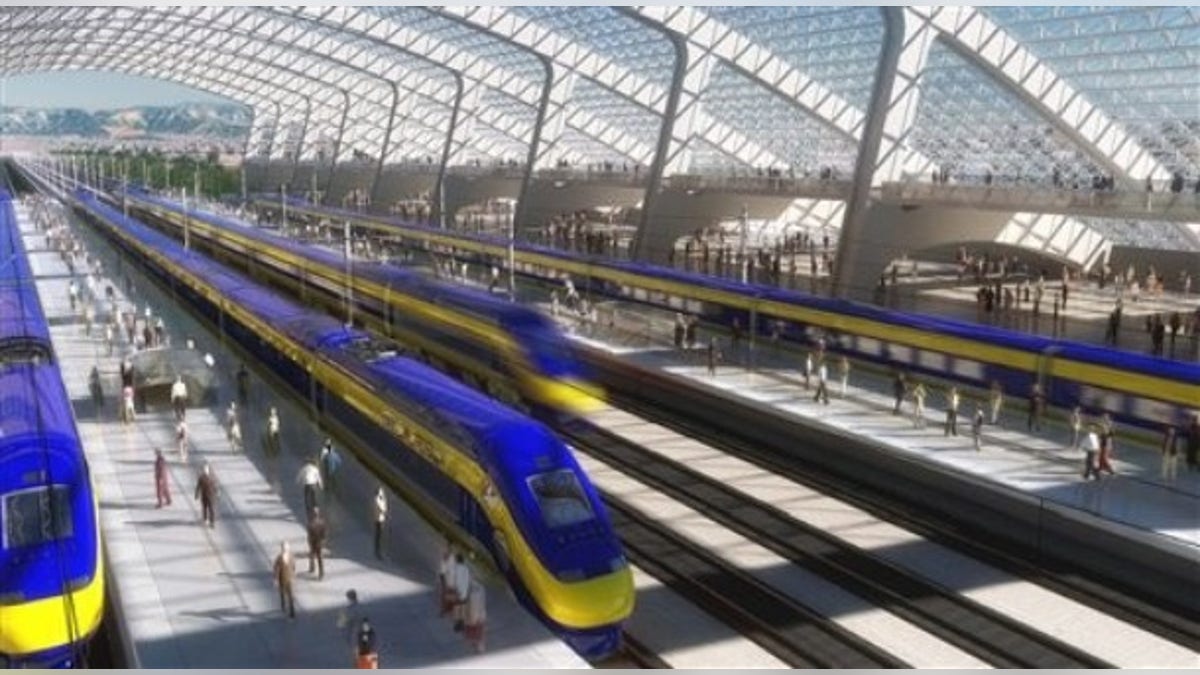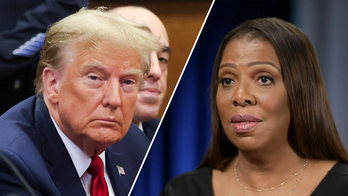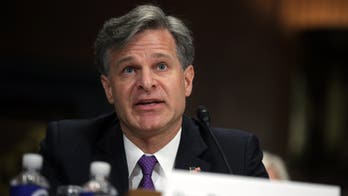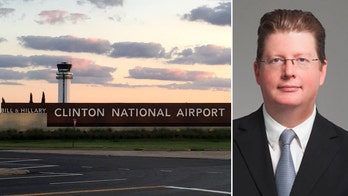
This image provided by the California High-Speed Rail Authority shows an artist's conception of a high-speed rail station in California.
The Obama administration announced this week it's giving California $179 million to fill in portions of a high-speed rail that will travel from Los Angeles to San Francisco, but the project is increasingly being portrayed as a local transportation boondoggle, with the cost for building the first section billions more than originally estimated.
Arnold Schwarzenegger, while governor, said the total $43 billion cost was too prohibitive to create the 220-mile per hour system, but his successor, Gov. Jerry Brown, has accepted federal cash, in what will now be divided between three areas.
“California voters and train passengers have said it loud and clear, they want access to a world-class rail system in California,” Secretary Ray LaHood said Monday. “These projects ensure passenger rail is built to support a thriving California economy in the 21st century, while creating thousands of new construction and manufacturing jobs today.”
Across the country, 32 states and the District of Columbia are laying the groundwork for high-speed rail corridors. President Obama’s controversial stimulus package along with annual spending bills have provided $10.1 billion for the project.
But in California, a cautionary tale is emerging.
A 2009 business plan developed for the California High-Speed Authority, the entity overseeing the project, estimated costs at about $7.1 billion for the equivalent stretch of tracks in the first section. Officials say those estimates were made before detailed engineering work and feedback from communities along the proposed route.
Now the cost is $2.9 billion to $6.8 billion more than that original estimate.
The rail authority's chief executive, Roelof van Ark, said planners anticipated the higher costs as more information about land acquisition and other details related to actual construction became known.
"We've had cost increases, but I believe the costs are now realistic and fair," he said.
Van Ark also said he expects the estimated total cost of the project, originally pegged at $43 billion, to rise.
Construction of the first stretch of tracks -- as much as 140 miles from south of Merced to just north of Bakersfield -- is scheduled to begin by September 2012 using $3.5 billion in federal money and an estimated $2.8 billion from the sale of state bonds approved by voters.
The higher cost estimates already have been factored into the federally funded construction, van Ark said.
The decision to start the planned 800-mile system in the Central Valley, linking relatively small towns, has generated criticism that the project could become a high-priced "train to nowhere." In a critical report earlier this year, the nonpartisan Legislative Analyst's office said the rail line should start near coastal population centers and recommended moving control of the project from the largely independent rail board to the state Department of Transportation.
Critics say the higher cost estimates contained in the environmental reports, the first detailed look at the project, is another warning sign that the rail line should be halted until cost and routing questions can be worked out.
State Sen. Doug La Malfa, R-Willows, said he is preparing legislation that would ask voters to reconsider the project in June 2012. Voters authorized $9 billion in bonds for the project in 2008, although most of those bonds have not yet been sold.
"This thing is well on its way to massive cost overruns," La Malfa said.
Supporters of the rail project, the nation's most ambitious, said the private sector will be a significant source of funding and that the money will start flowing once work begins.
La Malfa and other critics say the fiscal problems facing the federal and state governments, and the likelihood that Congress will continue to cut federal spending as it tries to reduce the nation's debt could choke off funding.
"The costs are starting to escalate, and we need to take a time-out," he said.
Federal transportation officials remain supportive of California's project. The per-mile cost for the Central Valley segment is expected to be less than or in line with international averages for high-speed rail projects, said Roy Kienitz, undersecretary for policy with the U.S. Department of Transportation.
"Our goal is to help the state's decision-makers choose a design that avoids unnecessary costs, and we're pleased the authority has embraced many of the recommendations from the high volume of public response," he said.
Moving the initial section of tracks from the Central Valley would jeopardize federal money received for construction because it was granted with a strict timetable and requires that the work be done in the valley.
The Associated Press contributed to this report.




